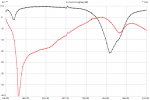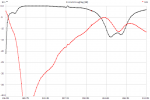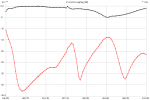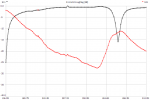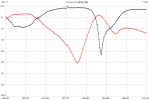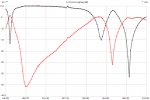There's always a lot of discussion about the relative merits of various antennas, so I decided it was time to do a real-world comparison of various antennas, looking at actual performance, rather than just SWR. Here's the test setup:
I'm taking two identical antennas, attaching them to ports 1 and 2 of my Nano VNA, then logging the loss between port 1 and 2, which is dictated by the coupling between the antennas at a given frequency. Then I average 13 iterations of a 136-512MHz sweep, while holding the VNA like a walkie-talkie away from nearby metal objects. The data of interest is the red trace, and higher is better (indicates less loss).
I'm taking two identical antennas, attaching them to ports 1 and 2 of my Nano VNA, then logging the loss between port 1 and 2, which is dictated by the coupling between the antennas at a given frequency. Then I average 13 iterations of a 136-512MHz sweep, while holding the VNA like a walkie-talkie away from nearby metal objects. The data of interest is the red trace, and higher is better (indicates less loss).




